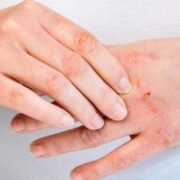From the start of the Covid-19 epidemic, public health officials in Quebec and elsewhere insisted on age as a risk factor. We have identified those aged 70 and over as being the most likely to suffer major complications, to be hospitalized in intensive care and possibly to die from it. But age is not the only risk factor.
It is true that people aged 70 and over account for 33% of the detected cases of Covid-19, while they make up only about 13% of the Quebec population. However, it should be noted that the youngest are more often asymptomatic and therefore escape screening, while the elderly in long-term care centres have, on the contrary, been much more tested than the rest of the population. It is therefore likely that their relative weight among the Covid-19 cases is overestimated.
That said, those aged 70 and over account for 72% of hospitalizations (5 times more than their demographic weight), and for 92% of deaths (7 times their demographic weight) according to data from the National Institute of Public Health of Quebec. . At first glance, age, therefore, seems to be an important factor.
But in epidemiology, it is not enough to identify vulnerable groups. You have to try to find out why they are.
What are the risk factors for complications and death?
Some Covid-19 victims die quickly, without anyone understanding why. However, the vast majority of people who died or were brought to intensive care went through severe respiratory distress. Many were already suffering from a chronic obstructive pulmonary disease (COPD). However, we know that the excessive inflammatory reaction, often triggered by Covid-19, mainly attacks the pulmonary alveoli.
Among the victims, there are also people suffering from heart problems and strokes. Again, it is an excessive inflammatory reaction that would cause vascular occlusions (thromboses) in 20 to 55% of cases (and even up to 70%, according to Michelle Sholzberg, a hematologist at St-Michaels Hospital in Toronto). Untreated hypertension also promotes these kinds of complications.
Another risk factor is diabetes and chronic kidney disease, which makes the prognosis of the disease worse, another likely consequence of micro thrombosis.
Finally, people with a depressed immune system, especially because of an illness like AIDS, or because of the treatment of an autoimmune disease or chemotherapy, are also more vulnerable.
Note that obesity is often mentioned because it causes a chronic inflammatory state, and promotes the onset of heart and circulatory disorders, as well as diabetes.
However, the elderly are much more likely to suffer from these chronic pathologies.
In addition, people 65 and older often have more than one of these comorbidities.
Do these factors explain complications and death?
According to a compilation by the New England Journal of Medicine, people with these comorbidities accounted for 38% of the reported cases of Covid-19, but for 71% of hospitalizations, 78% of intensive care patients and 94% of deaths.
An even more recent study published in the Journal of the American Medical Association (JAMA), involving 5700 patients with a median age of 63, all hospitalized in New York for Covid-19, presents an even higher figure: among those hospitalized, 6% had a chronic health problem, 88% had two or more. Only 6% did not suffer from comorbidities. This was true for all patients, regardless of age.
If these American data are confirmed, the presence of preexisting chronic diseases would be a greater indicator of risk of hospitalization than an age of over 70 years.
A similar compilation carried out in Italy by the Instituto Superiore di Sanità, and relating to 2003 patients who died from Covid-19, established that 48.5% suffered from 3 chronic pathologies, 25.6% had 2, and 25, 1% only one. In fact, only 3 patients in 2003 died without a pre-existing condition (0.7%). As this Italian research was carried out at the worst time of the crisis, several thousand people, still in intensive care, were able to die thereafter. However, it is likely that the people who were most ill at the start died more quickly. The victims without known co-morbidities could be a little more numerous, when the final assessment will be published, after the pandemic.
Aging and weakening of the immune system
Despite this, several researchers believe that immunosenescence , the progressive loss of immune system efficiency with age, could contribute to increasing susceptibility to the coronavirus, even in the absence of co-morbidities. This degeneration largely explains the great vulnerability of the elderly to many infections and epidemics, notably the flu.
As explained by Dr. Richard Marchand, microbiologist infectiologist, to columnist Patrick Lagacé, in La Presse . Immunosenescence means that the Covid-19 virus can reproduce in larger quantities in older patients, who then have a huge viral load (and are therefore very contagious). This strong indication of contagion partly explains the speed of spread in CHSLDs and with nursing staff.
Note that not all elderly people suffer from immunosenescence, especially if we group together all people aged 70 and over. And that age is not the only cause: it can also be induced by various chronic viral infections (herpes, for example), malnutrition, obesity, alcoholism or smoking. And maintaining a high level of physical activity delays its development by several years.
In addition, if the weakened immune system favors the appearance of chronic inflammatory diseases in the elderly, it can, paradoxically, be an advantage in the face of certain microbes which trigger an overly strong reaction of the immune system, a phenomenon sometimes called “cytokine storm”. . This was the case, for example, for the H1N1 virus, where the elderly experienced fewer complications. However, the main complications of Covid-19 are associated with such an excessive inflammatory response.
In conclusion, if Covid-19 affects older people more, certain chronic inflammatory diseases and weakened immune systems, especially in older people in poor physical shape, seem to explain this situation in large part.











